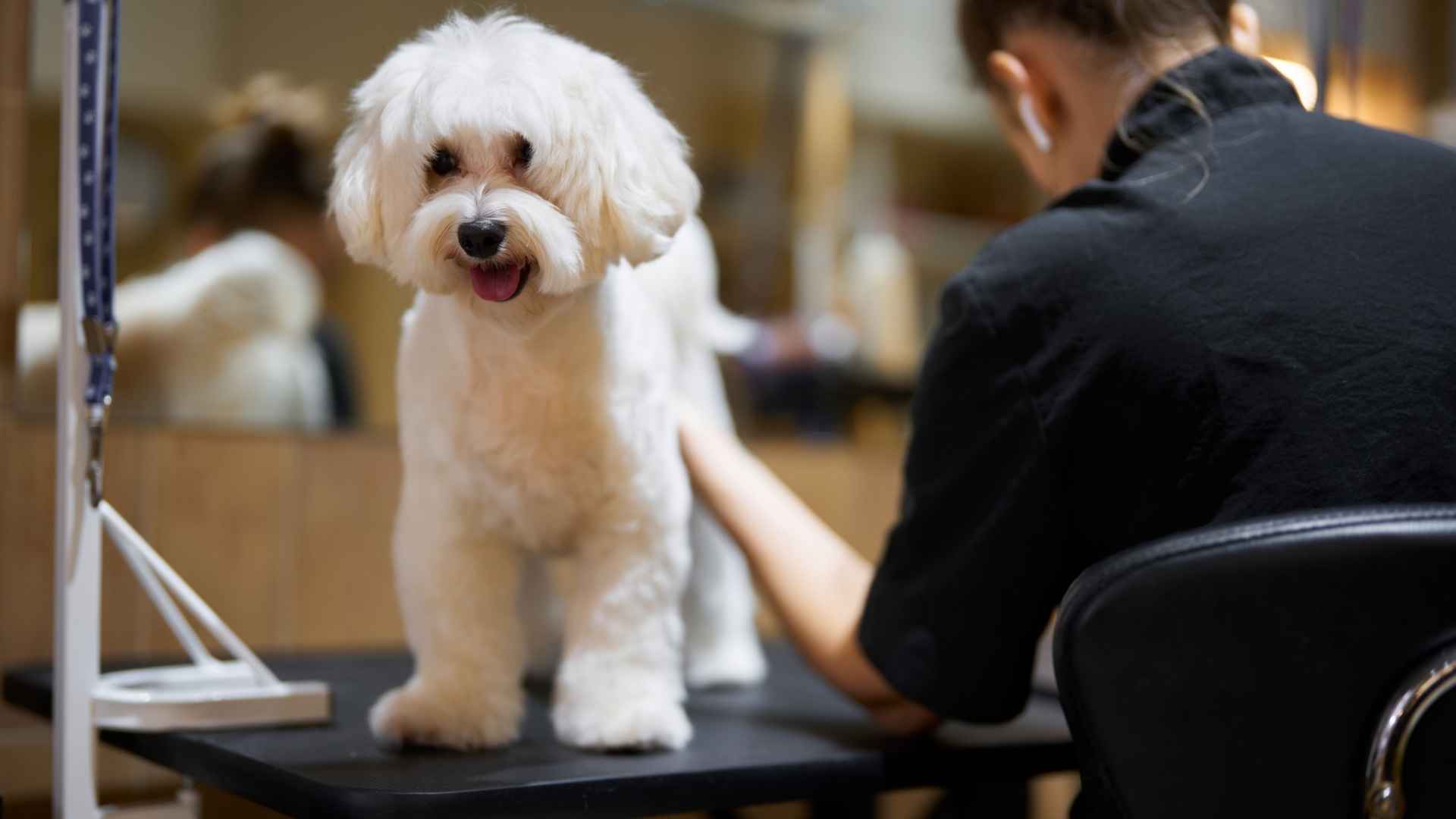Tired of fur floating through the air or clinging to every surface? You’re not alone. While all dogs shed to some extent, some leave a lighter footprint—literally and figuratively. That’s where moderate shedding dog breeds come in.
They offer the joy of canine companionship without turning your home into a fur-covered battleground. Whether you’re dealing with mild allergies, hate constant vacuuming, or just want a low-effort grooming routine, these dogs strike the perfect balance between fluff and function.
In this article, we’ll explore seven fantastic companions who won’t drown your life in dog hair but will flood your heart with love.
Moderate Shedding Dog Breeds
1. Chesapeake Bay Retriever
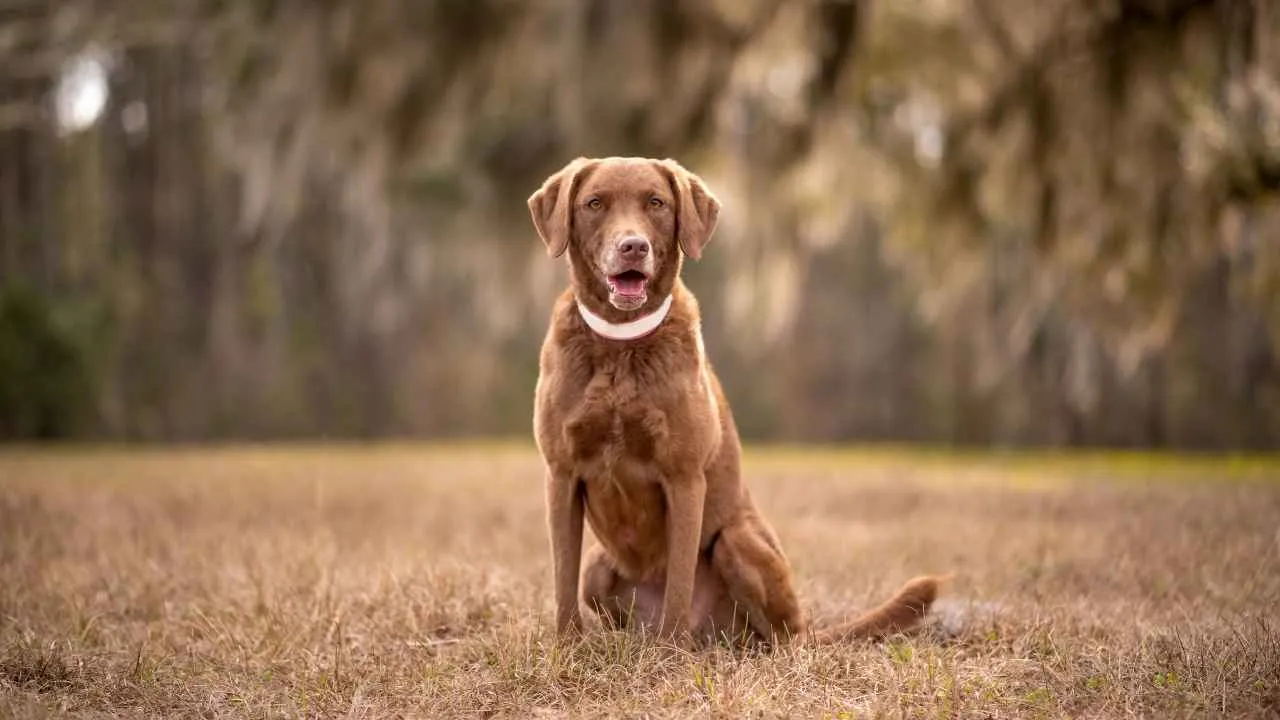
Built for strength and endurance, the Chesapeake Bay Retriever stands out with its thick, oily double coat, says WebMD. It’s weather-resistant and perfect for icy waters, offering both insulation and protection. While their fur isn’t overly messy, they do lose some hair steadily over time.
Brushing a few times a week helps limit the amount of loose fur around the house. Their coat’s texture feels slightly harsh to the touch, but doesn’t require constant trimming. Owners usually find weekly maintenance enough to keep it under control.
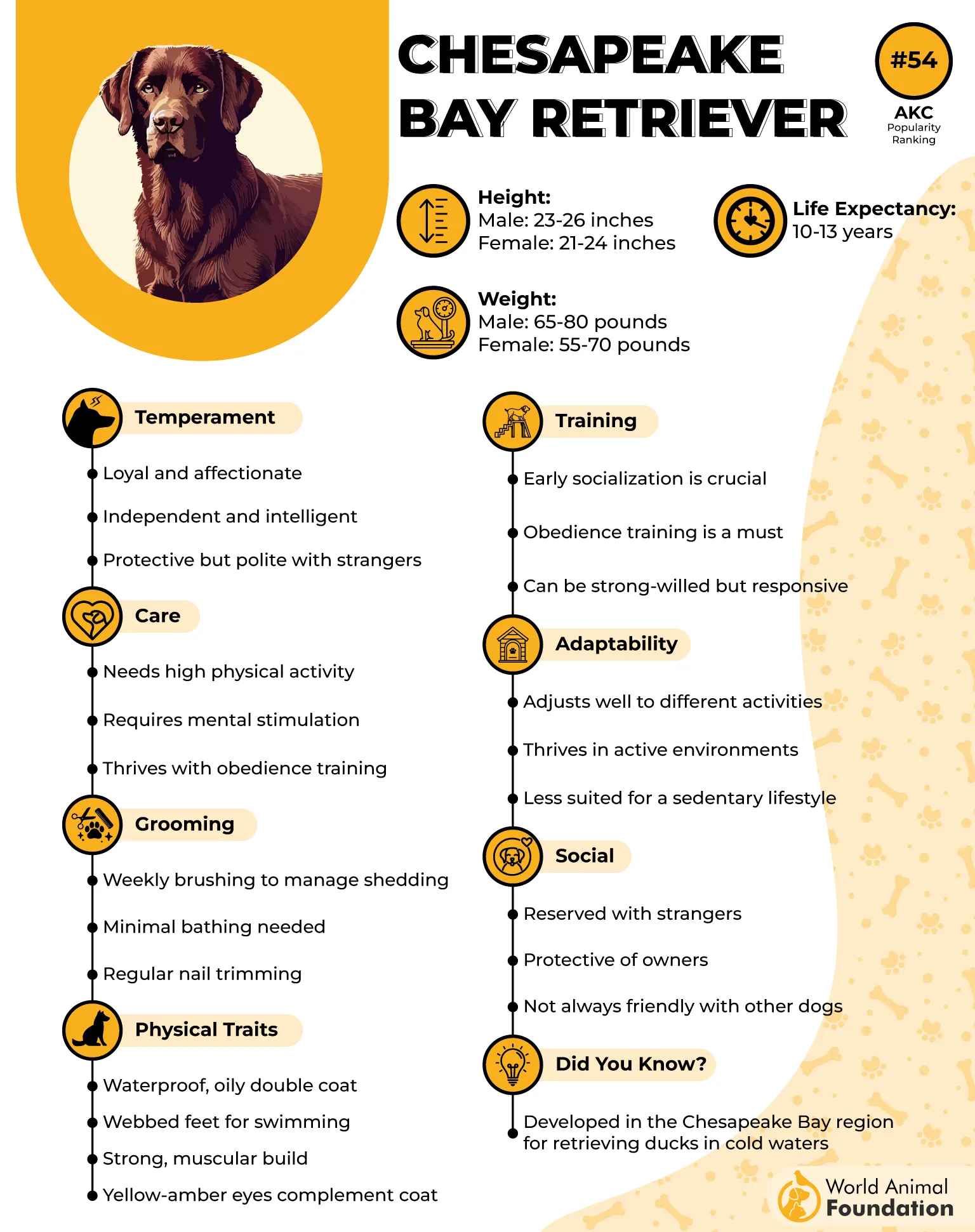
Originally bred for duck hunting in frigid conditions, their hardy nature extends beyond just physical toughness. These retrievers are determined, confident, and independent thinkers. They aren’t your typical cuddly lap dogs, but they’re extremely loyal to their people.
Males are usually more muscular and larger than females. Despite their size, they move gracefully and are quite agile when swimming or running.
Chesapeake loves a good workout. Long walks, fetch, and swimming keep them mentally and physically fit. A tired Chessie is a well-behaved one.
Fun fact: They were named after the Chesapeake Bay region in the U.S., where they were developed to retrieve hundreds of ducks in a single day. Their coat played a huge role in that.
2. Clumber Spaniel
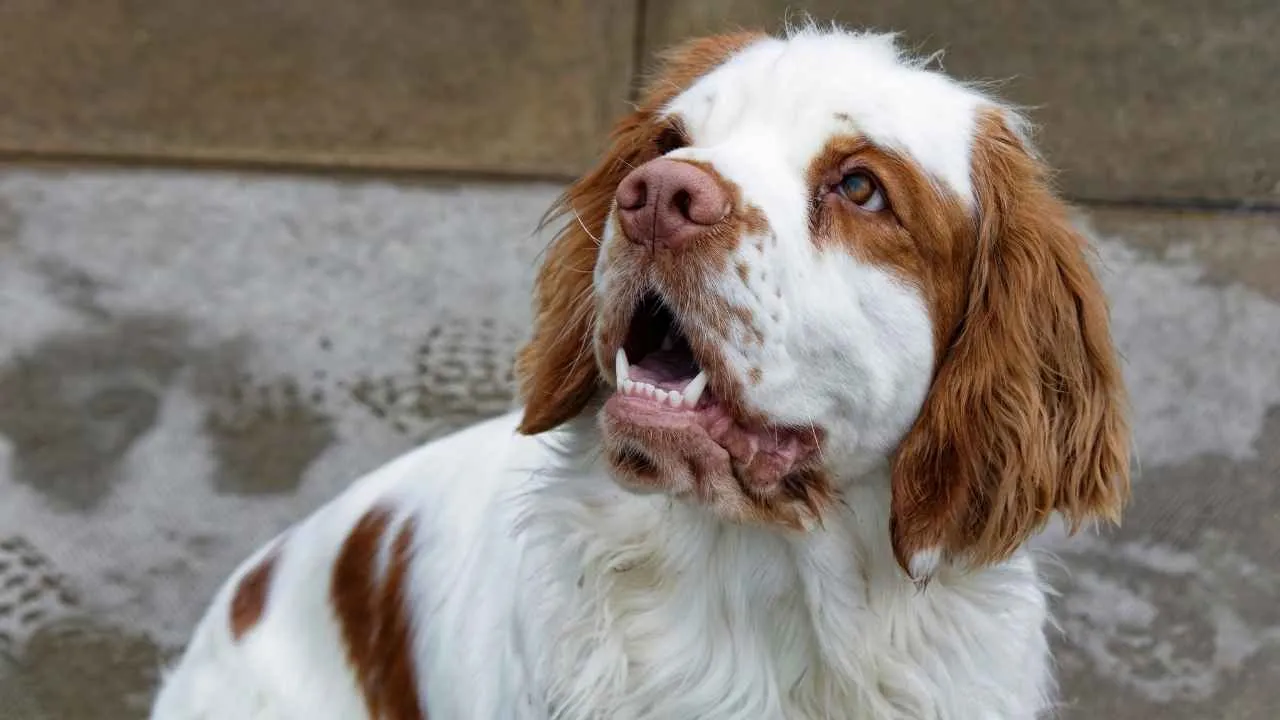
According to AKC, Clumber Spaniels are calm, noble-looking companions with sturdy frames and dignified faces. Their long, flat coats have a feathery finish, especially around the chest and legs. Though not constant shedders, they tend to shed more fur during seasonal shifts.
Their grooming needs lean toward moderate. Weekly brushing can easily keep their coat neat and remove loose hairs. A slicker brush works well to detangle and maintain their elegant look without too much fuss.
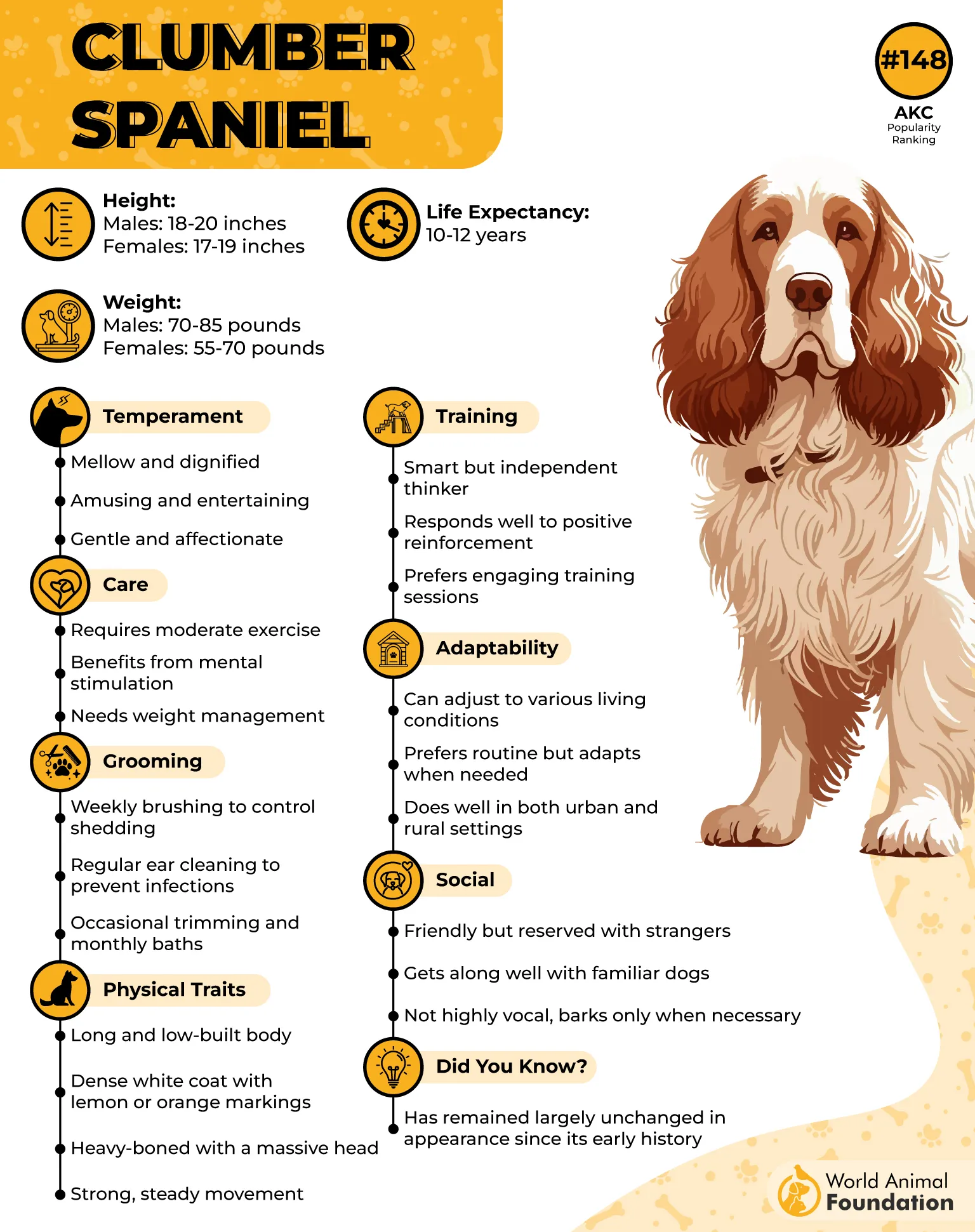
Despite their laid-back temperament, Clumbers were originally bred as gun dogs. They have a surprisingly good nose and plenty of endurance for long walks in the countryside. Indoors, though, they’re quiet and slow-moving. Their lifespan averages around 10 years. Their size, paired with their calm demeanor, makes them great for families who enjoy peaceful pets.
These dogs are affectionate but not overly needy. They enjoy company and will follow their people around the house, though they’re never hyper. Their droopy eyes and soft expressions make them incredibly charming.
Clumber Spaniels are known to snore and occasionally drool, which adds to their unique personality. They’re not overly energetic but appreciate games that stimulate their mind.
Because of their feathered fur, checking for twigs or mats after walks is important. Their shedding isn’t overwhelming, but regular brushing is the key to managing their coat gracefully.
3. Dogue de Bordeaux
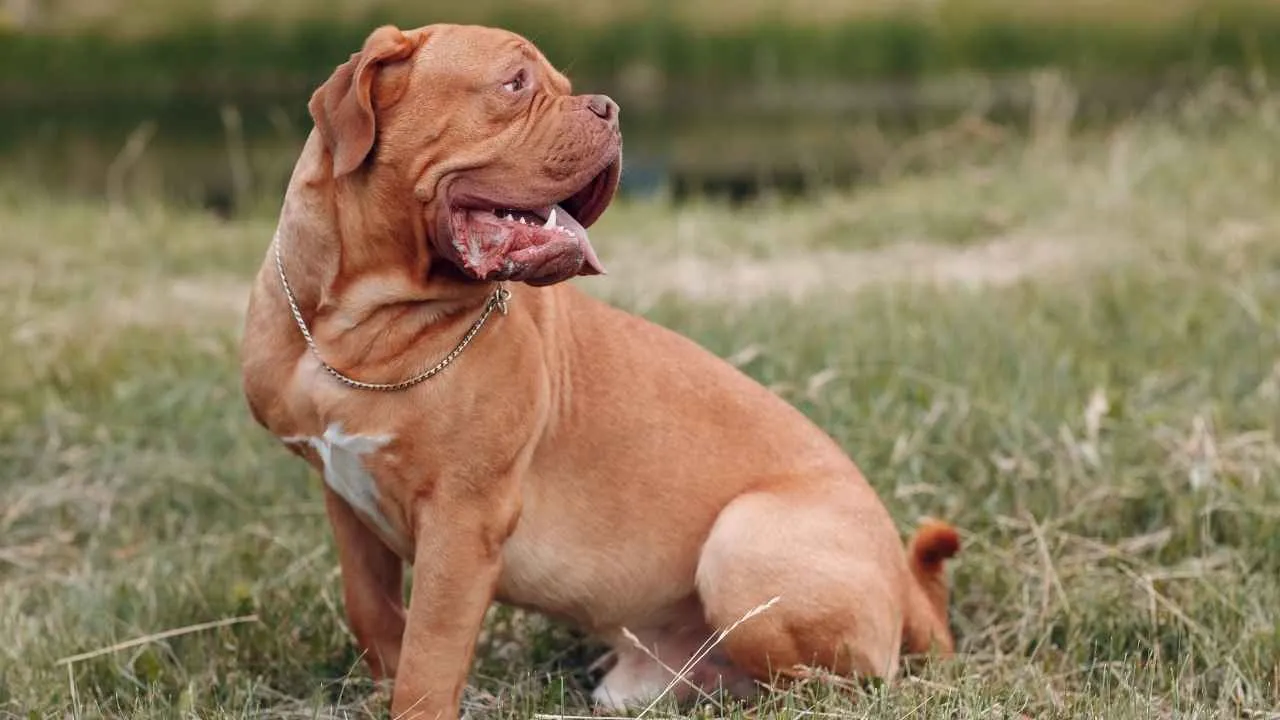
This powerful breed, sometimes called the French Mastiff, sports a short, smooth coat that’s low-maintenance. Shedding is noticeable but not unmanageable, especially with regular grooming.
The Dogue de Bordeaux has a large, muscular frame and a serious expression. They are one of the heaviest companion dogs. Yet their fur rarely becomes a household issue with weekly care.
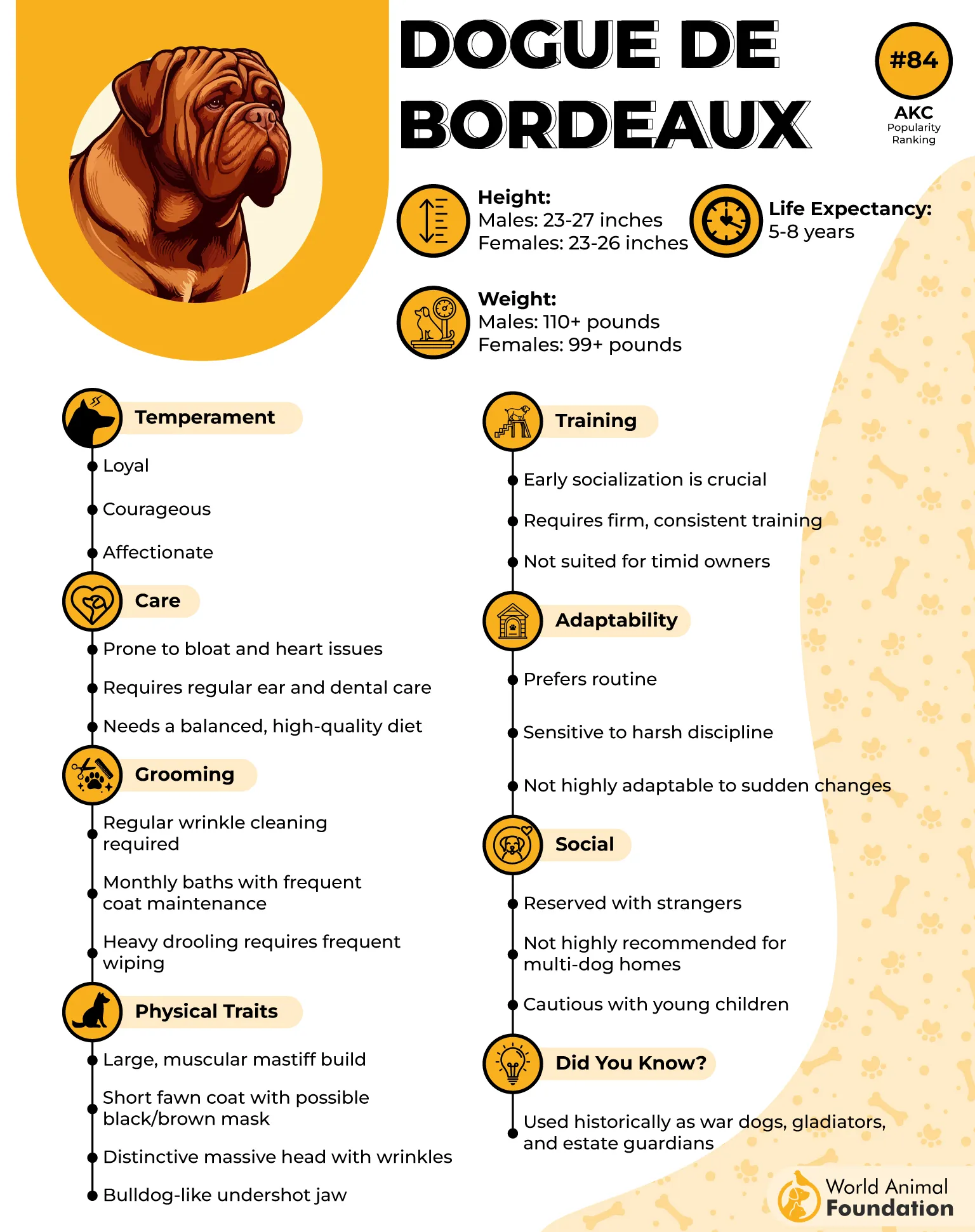
They’re loyal and protective, forming strong bonds with their family. Despite their tough appearance, they’re affectionate and often gentle with children. Their calm energy makes them great indoor dogs, but they still need daily walks.
Drooling is far more of a concern than fur in this breed. Owners often carry a towel nearby. Shedding stays mild, even during seasonal changes, and their short coat is easy to maintain.
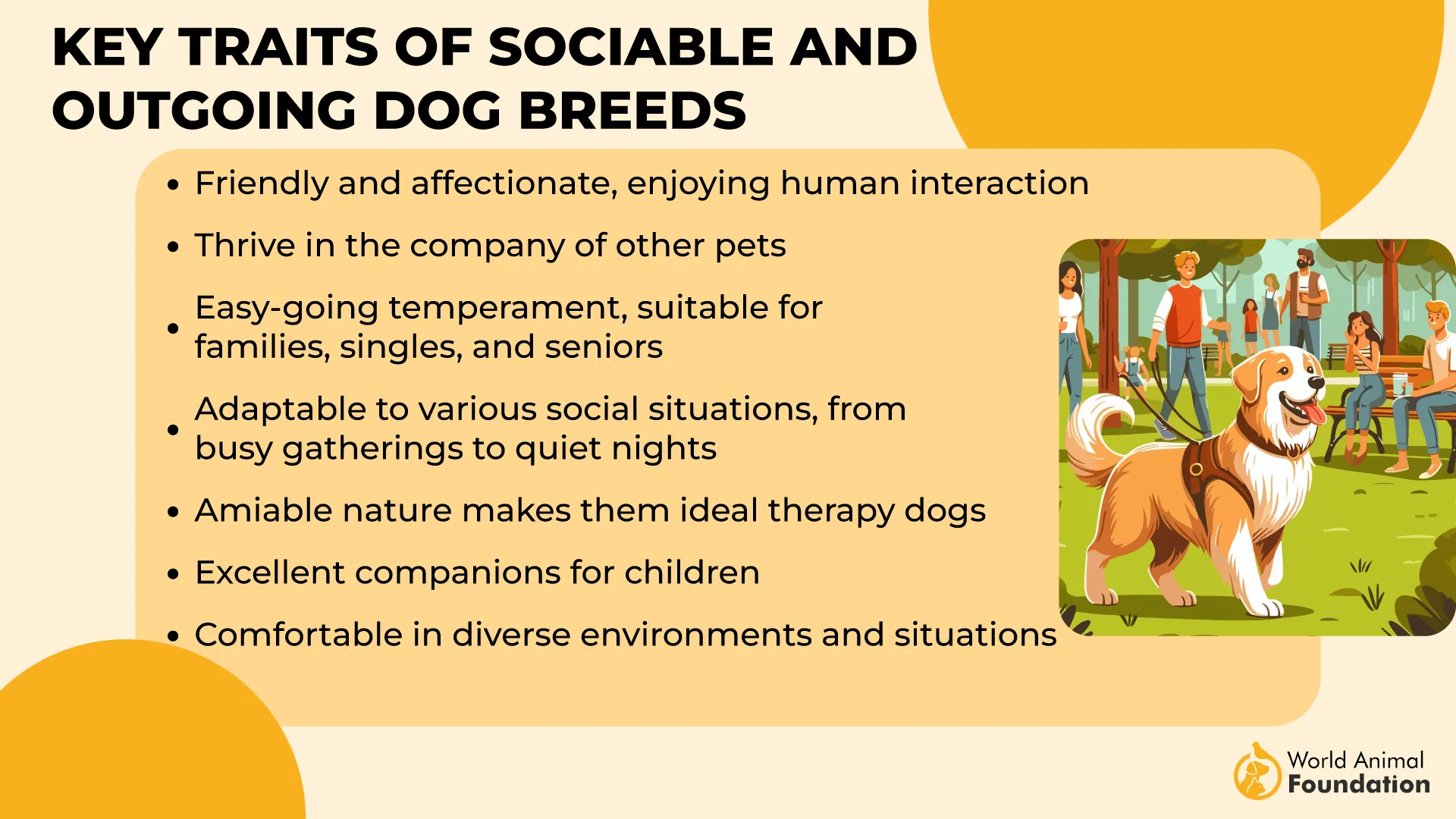
These dogs date back to ancient France, where they were used to pull carts and guard property. They have a regal history and a brave heart, often alert but not aggressive without cause.
They live around 8 to 10 years, which is typical for larger breeds. Early socialization and firm, kind training are key to helping them thrive in family settings.
Fun fact: The Dogue de Bordeaux starred alongside Tom Hanks in the movie Turner & Hooch. That role introduced many to their slobbery charm and loyal nature.
4. English Setter
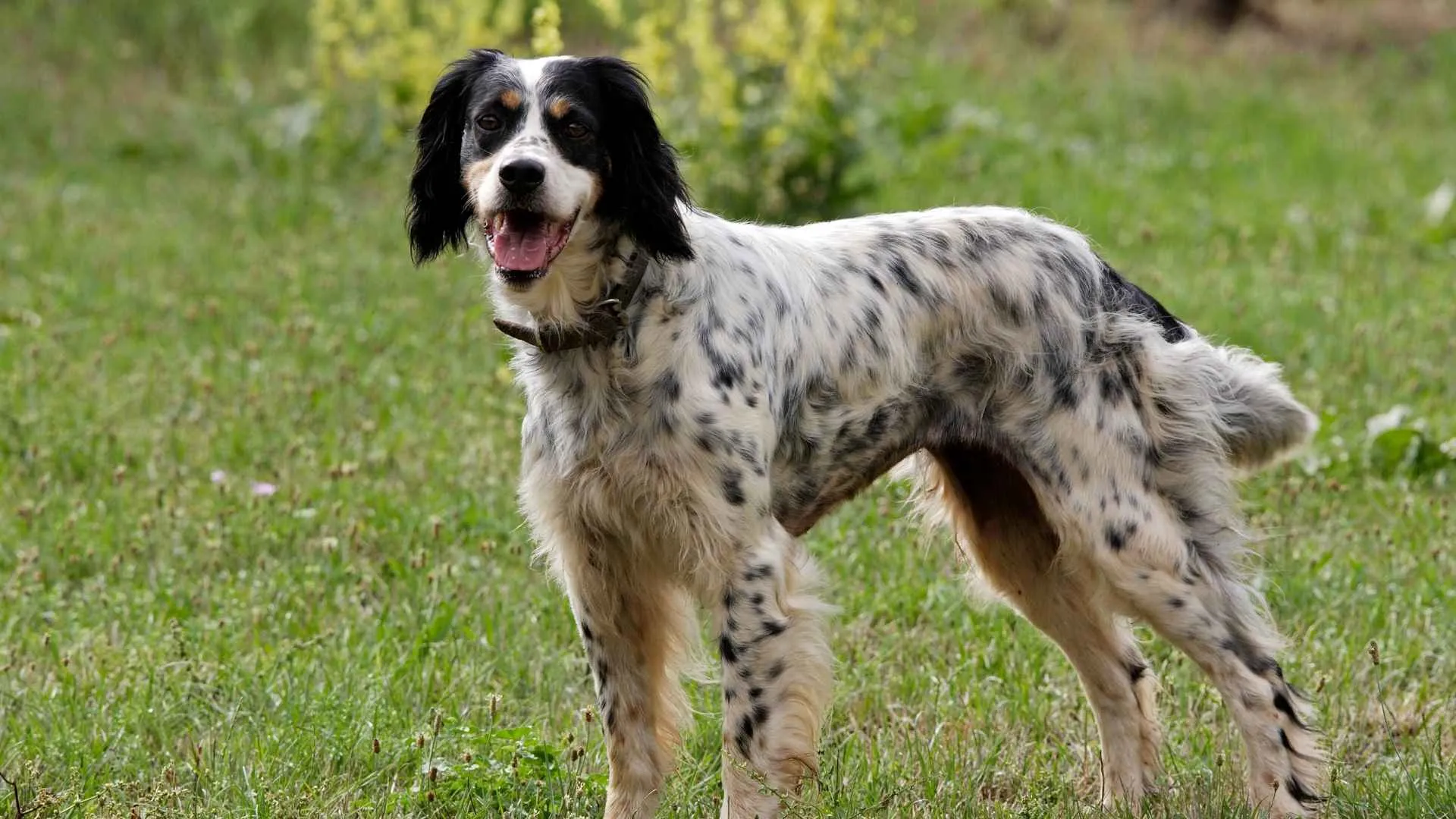
Elegant in build and behavior, the English Setter carries a flowing coat patterned with distinctive speckles called “belton.” This breed isn’t overly hairy, but it does experience a steady, manageable release of fur throughout the year.
Their feathered coat benefits greatly from routine brushing. Two to three times a week keeps their fur in excellent shape and reduces the amount that ends up on furniture. A pin brush or slicker helps prevent mats, especially behind the ears and under the arms.
Setters are known for their sociable personalities. They love people, playtime, and being part of the action. Their temperament is a beautiful mix of gentle and joyful, which makes them a great match for active families.
Males are generally larger than females. They live for longer years when well cared for. Their stamina is impressive, especially outdoors.
They were originally bred for bird hunting, using their sense of smell and graceful crouching behavior to signal game. Even today, they remain active and alert, thriving with regular mental and physical stimulation.
Although their coat is luxurious, it’s not hard to manage if you stay consistent. Occasional trimming around the feet and ears can help keep them neat between baths.
A fun tidbit—President Theodore Roosevelt had an English Setter named Rollo. He described him as “a most gentlemanly dog,” which sums up the breed perfectly.
5. English Springer Spaniel
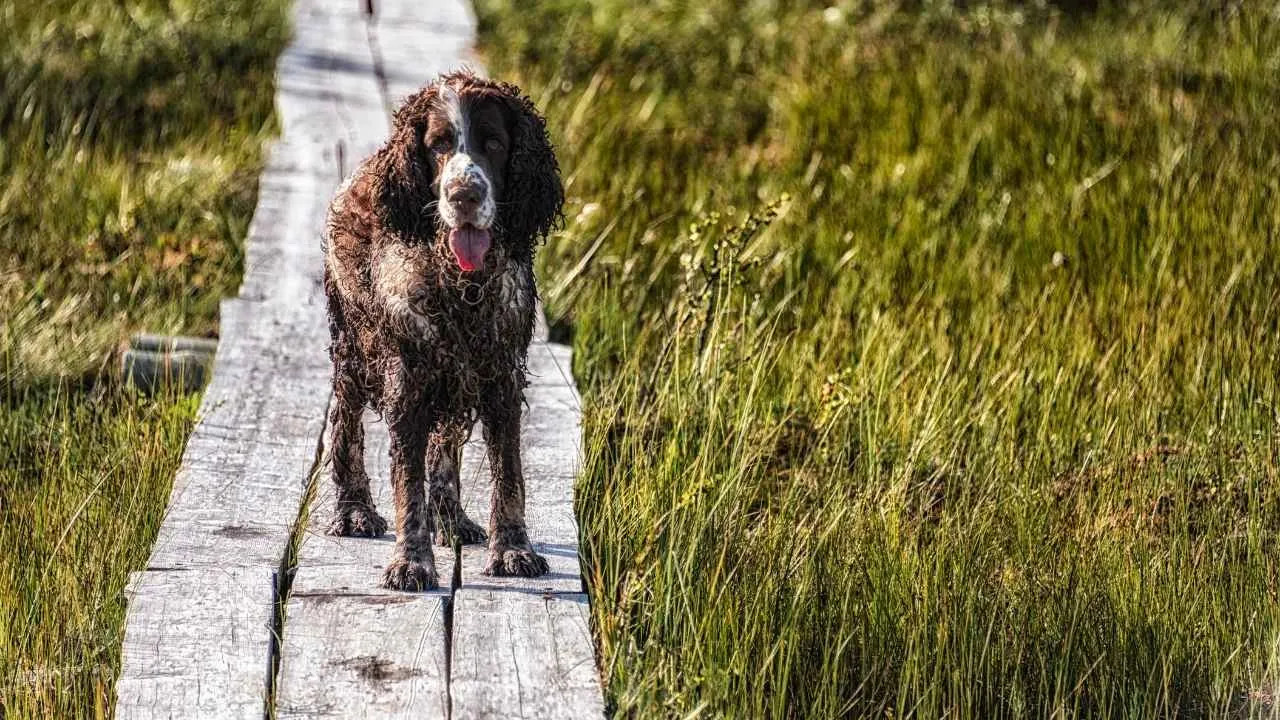
With their bright eyes and constantly wagging tails, English Springer Spaniels bring energy and enthusiasm to any home. Their medium-length coats are sleek yet sturdy and tend to shed in moderation, especially as seasons shift.
To keep their fur looking tidy, brushing every few days is recommended. Their feathered legs and ears can’t tangle easily, so regular maintenance keeps the coat smooth and reduces hair around the house.
These dogs are brilliant and biddable, excelling in obedience and agility. According to PetMD, they love being around their people and thrive in environments where they’re included in daily activities. Expect them to follow you from room to room, eager for action.
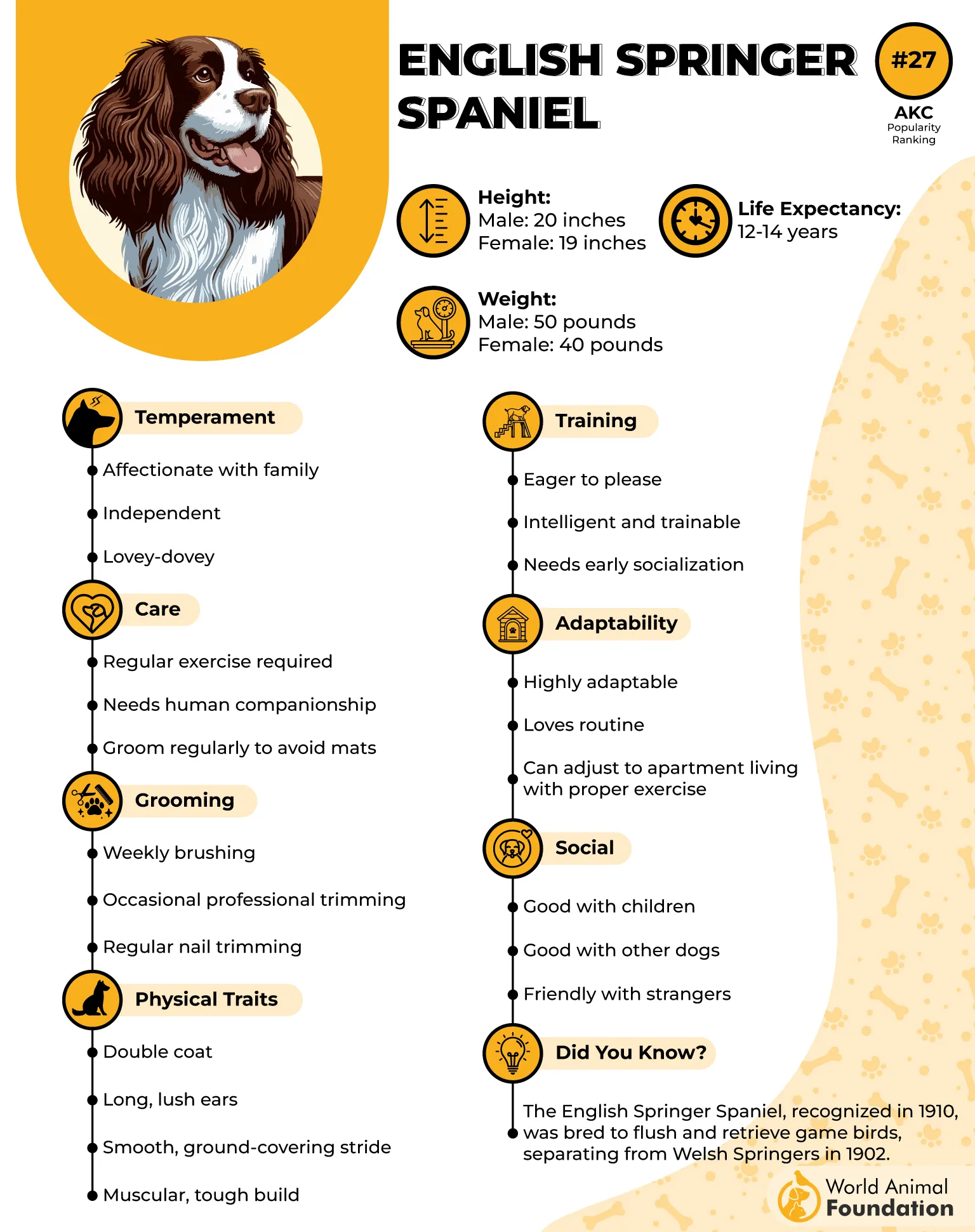
Their lifespan is usually longer than other breeds. They’re built for endurance and are happiest when they get plenty of movement.
Originally bred to flush game birds into the air, Springers still retain their field instincts. You’ll often catch them sniffing through shrubs or leaping with joy in open spaces.
Unlike heavy shedders, their coat doesn’t demand constant upkeep. A consistent grooming routine combined with good nutrition helps minimize any excess hair.
Bonus fact: This breed has an excellent sense of smell and is often used as a detection dog in customs and law enforcement. Not just charming, but clever too.
6. Gordon Setter

The Gordon Setter, with its dramatic black and tan coat, is the heaviest and most robust of all setter types. Their rich, velvety fur sheds moderately but steadily, making grooming a regular necessity for coat control.
Their long feathering can get tangled, especially around the chest and tail. A few brushing sessions a week help prevent mats and manage loose strands. During spring and fall, expect a slight uptick in hair fallout.
Unlike their lighter-set cousins, Gordons are built like tanks—solid, muscular, and full of stamina. Despite their big size, they’re surprisingly nimble.
These dogs form strong bonds with their families. They’re affectionate yet protective, often shadowing their owners. Gordons may take time to warm up to strangers, but are devoted once trust is earned.
Originally bred for tracking game birds in Scotland, they possess remarkable scenting abilities. Outdoorsy families will find this breed thrives with hiking, running, and fetch in wide-open areas.
Although not fluffy or high-maintenance, their coat needs upkeep to stay sleek and mat-free. Regular baths and brushing keep the shedding from becoming overwhelming.
A fun note—this breed was favored by nobility in the 1600s. Its striking appearance and dignified demeanor made it a status symbol among the Scottish elite.
7. Irish Wolfhound
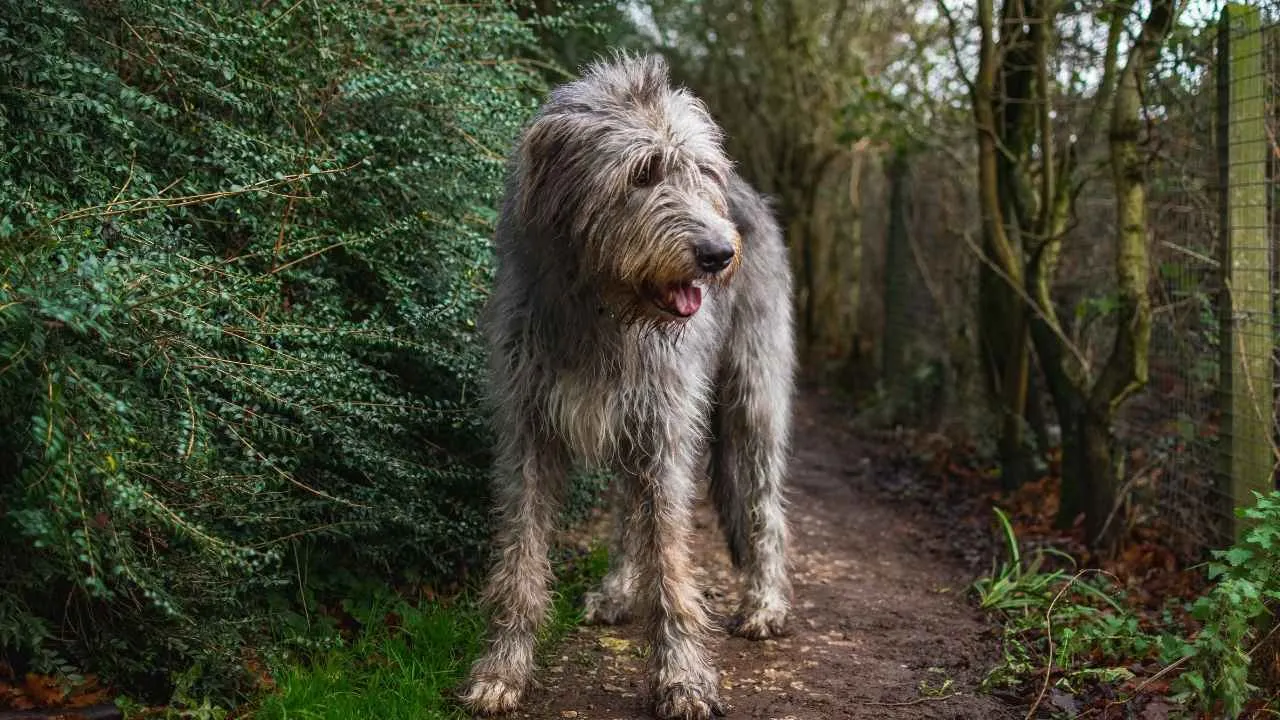
Standing tall as the world’s tallest dog breed, the Irish Wolfhound commands attention with its lanky, regal frame. Their wiry, tousled coat is surprisingly manageable, offering only a light to moderate amount of fur around the home.
Weekly brushing helps reduce buildup and keeps their rugged look in check. Their rough coat rarely mats, but regular maintenance ensures it stays healthy and clean, especially during the shedding seasons.
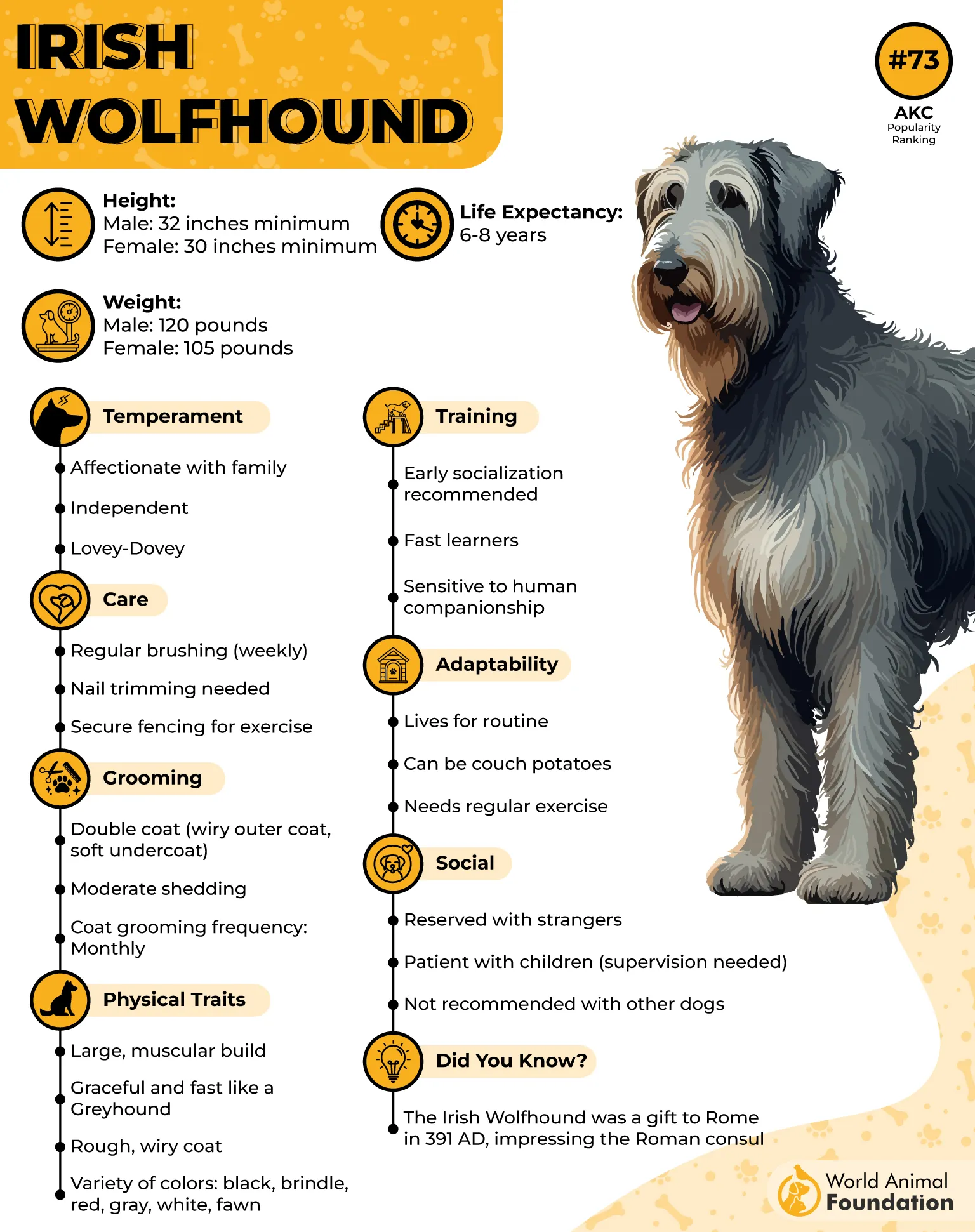
These dogs are gentle giants. Calm, kind, and loyal, they’re wonderful family pets and tend to get along well with other animals.
Originally bred to hunt wolves and elk in ancient Ireland, they’re powerful yet serene. Their laid-back nature means they prefer quiet environments and a comfy place to sprawl out.
They’re not overly active but still need daily walks and mental enrichment. Their calmness doesn’t mean laziness; it just means they approach life with a mellow rhythm.
Though they live shorter lives, averaging around 6 to 8 years, they make an unforgettable impact with their affectionate nature and striking presence.
Here’s something fun: Irish Wolfhounds appear in mythology and medieval legends. They were gifted to royalty as symbols of strength and nobility. Living history in canine form.
Conclusion
Choosing the right companion goes beyond just looks—it’s about finding the perfect balance of personality, care needs, and lifestyle fit. Moderate shedding dog breeds offer that sweet spot.
If you’ve been eyeing a Soft Coated Wheaten Terrier, Kerry Blue Terrier, or even a sleek Greyhound, remember that not all low-shedding dog breeds are created equal. Some require more frequent brushing to prevent tangles and remove dirt, while others—like the Basenji or Great Dane—can get by with less fuss. Whether you’re seeking a toy, small dog, or large breed, there’s a low-shedding breed to suit every lifestyle, from busy families to allergy-prone dog owners.
Unlike heavy-shedding dog breeds that leave dog hair in every corner, these pups offer cleaner spaces, easier maintenance, and happy homes. While they aren’t always hypoallergenic dogs, their low-shedding coats and minimal grooming needs make them appealing for anyone who values cleanliness, comfort, and companionship.


